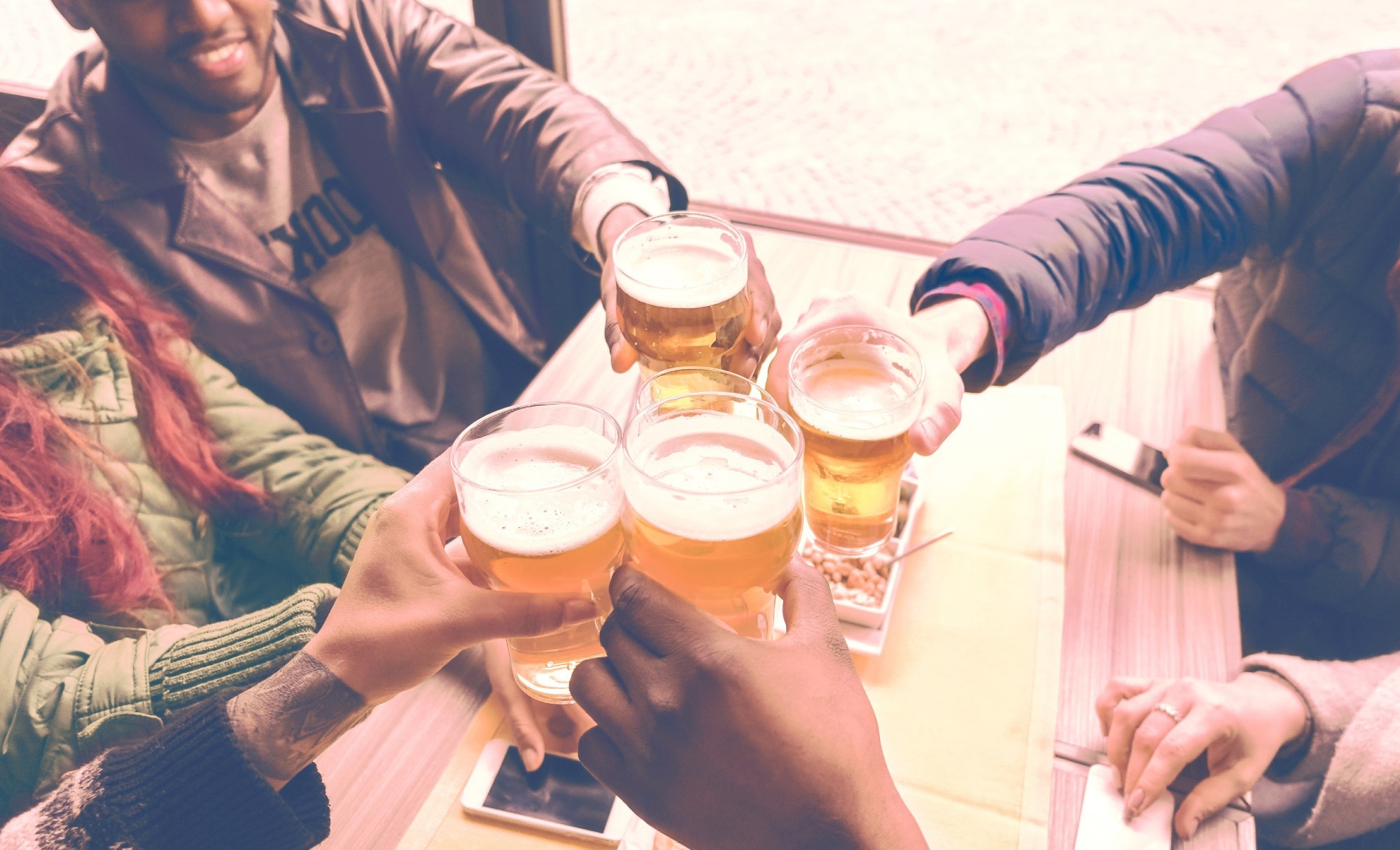In a recent study published in the BMJ, researchers investigated whether a 12-month app intervention could effectively reduce alcohol consumption in university students with self-reported unhealthy drinking habits, emphasizing the method’s efficiency and scalability compared to traditional interventions.
 Study: Effect of a smartphone intervention as a secondary prevention for use among university students with unhealthy alcohol use: randomised controlled trial. Image Credit: Akhenaton Images/Shutterstock.com
Study: Effect of a smartphone intervention as a secondary prevention for use among university students with unhealthy alcohol use: randomised controlled trial. Image Credit: Akhenaton Images/Shutterstock.com
Background
Unhealthy alcohol use is a significant public health issue, particularly among people aged 15-49. Students, due to social and academic pressures, are prone to this.
In 2019, 33% of United States (US) students reported heavy episodic drinking, and 30-60% of European students reported unhealthy alcohol consumption. Over 50% of US students aged 19-20 faced alcohol-related consequences, resulting in physical, emotional, and academic repercussions.
Addressing this requires strategic interventions, with screening followed by brief interventions recommended.
With limited people seeking treatment, technology, especially smartphones increasingly integrated into healthcare, offers a solution to manage health conditions. However, while online tools have shown promise, their smartphone app counterparts require rigorous evaluation for effectiveness in addressing alcohol misuse.
About the study
In the present study, the research protocol for this randomized controlled trial was pre-registered, and no deviations were made. Conducted at Lausanne University Hospital, the study aimed at secondary prevention of unhealthy alcohol use.
Students from four major institutions in Lausanne, including the University of Lausanne and the Swiss Federal Institute of Technology Lausanne, were recruited between April 26-28, 2021. Multiple channels, such as emails, posters, and websites, advertised the study, and the content was available in both French and English.
Students interested were screened via an online questionnaire, which assessed criteria like age, unhealthy alcohol use, smartphone ownership, and willingness to participate. Those fitting the criteria underwent the informed consent procedure, post which they were randomized into intervention or control groups.
The study focused on evaluating alcohol consumption among students. The intervention group was prompted to download an app related to alcohol consumption and received participation incentives.
This app was based on norms perception and risk perception theories. Conversely, the control group did not receive the app but had a similar incentive structure to ensure consistency.
Follow-ups were done online, with reminders for all the non-respondents, and monetary incentives were given for completed follow-ups. The primary outcome was the weekly volume of alcohol consumption, with secondary products related to the frequency and effects of heavy drinking.
Statistical analysis was robust, using various models to estimate the effect of the intervention, and special consideration was given to handling non-normally distributed data. Subgroup analyses were pre-registered and targeted students indicating potential alcohol use disorders.
Students involved in the app’s prior development were not eligible for the study. Feedback from students with unhealthy alcohol use played a role in app development and study design.
Study results
In the study conducted from 26 April 2021 to 30 May 2022, 72.5% of 3714 students indicated unhealthy alcohol consumption.
Out of these, 87.8% were eligible, with 65.7% completing the initial assessment. Follow-up rates at three, six, and twelve months were 96.4%, 95.9%, and 93.8%, respectively. Four withdrew for reasons such as lack of interest and relocation overseas.
The average age was 22.4 years, with 54.1% females, and most were pursuing a bachelor’s degree. The initial average weekly drink count was 8.59, with an average of 3.53 heavy drinking days in the past month.
Of those assigned the intervention app, 83.5% downloaded it, and control group compliance was 95.5%. App users, on average, accessed 2.0 of its modules and used it 21.2 times.
Outcome assessments revealed the intervention group consumed less alcohol than the control group. No significant difference was observed in intervention effects between the follow-ups.
However, both groups displayed increased drinking at three months and reduced consumption by the sixth and twelfth months.
The intervention displayed initial effectiveness for heavy drinking days and maximum drinks per occasion, but the effects diminished over time.
The intervention showed no impact on alcohol-related consequences or academic performance. Supplementary analyses, including subgroup evaluations, supported these findings.
Discussions
The present research, targeting university students with unhealthy alcohol habits, revealed a smartphone app could reduce weekly alcohol consumption and heavy drinking days over a year. However, no significant impacts were seen on alcohol-related consequences or academic performance.
Interestingly, drinking increased at the three-month mark, possibly due to the easing of Corona disease 2019 (COVID-19) restrictions and the onset of summer vacations. This study’s strengths included diverse participant sources and high follow-up rates; conducting the entire study online minimized biases.
When contextualizing the results, it was clear that even slight reductions in alcohol consumption can have significant public health implications.
The Organisation for Economic Co-operation and Development suggests that even a modest decrease in alcohol intake can reduce premature death risks.
Considering the health risks associated with alcohol, the intervention’s benefits in decreasing consumption hold substantial potential for improving public health outcomes.










